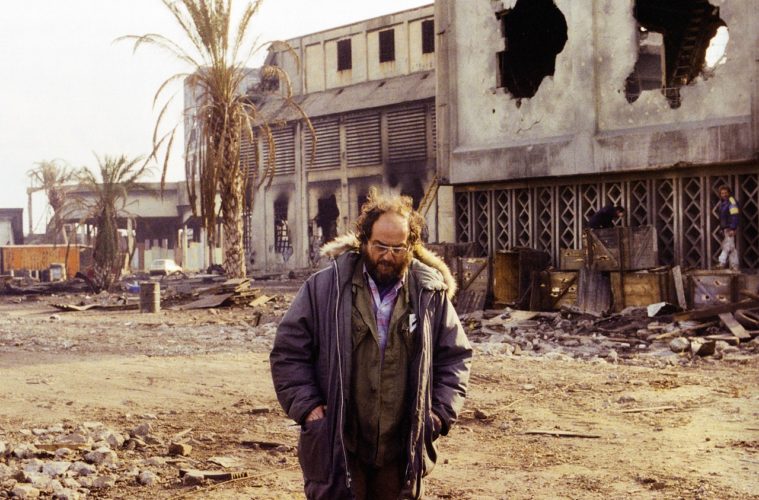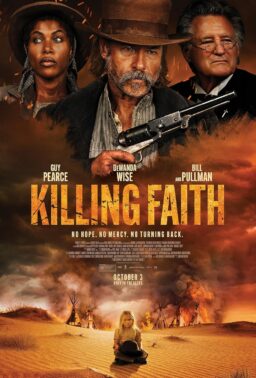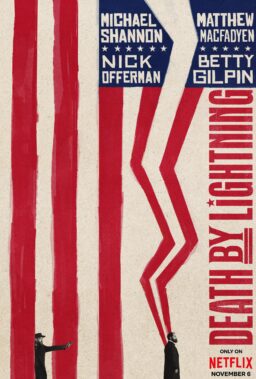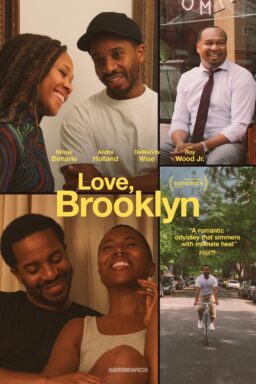We recently published a lengthy interview with one of Roger Ebert’s favorite filmmakers, his friend Gregory Nava. In light of what would have been Selena’s 50th birthday, Nava spoke about the making of “Selena,” as well as his work on “Mi Familia” and representation in general. Before that conversation got underway, Nava spoke to interviewer Aaron Aradillas about working with Stanley Kubrick on Spanish-language versions of his films. The conversation offers interesting insight into the processes of both Nava and Kubrick.
Is it true that you did the Spanish subtitles for “Eyes Wide Shut”?
No, I did the Spanish subtitles for “Full Metal Jacket.”
I was mixing at Todd-AO with Chris Jenkins, who is a marvelous mixer. We were in the middle of doing this mix, and the secretary at Todd-AO suddenly came on the line and said, “Stanley Kubrick is on the phone for Gregory Nava.” And I went, “That’s a joke.” And Chris goes, “Come on, stop fooling.” And the secretary goes, “No, it’s really him.” And so we stopped the mix, I got on the phone, and it was Stanley Kubrick, and Stanley Kubrick did not have an assistant to do phone calls. He would just call himself directly.
We started to talk and he told me over the phone that after a film was finished, he personally supervised all the foreign versions of his films because he felt they would do better commercially if he oversaw them. He was very specific, even obsessive about his work and he liked to do everything. He told me for foreign versions he didn’t like using translators per se, he liked to work with filmmakers and writers from the various markets. He understood there was a difference of Spanish from Spain and Spanish from Latin America and he wanted to work with a writer/director who understood Latin American Spanish for the Latin American version of “Full Metal Jacket.” As it turns out he was a huge fan of “El Norte.” He loved it.
So he asked me to work with him to translate “Full Metal Jacket” into Latin-American Spanish, and so I got started on a journey with Stanley Kubrick and working with him. He would work on every word and all the nuances of all these words. And, in the course of doing this, he found out that there was a difference between Mexican Spanish and Argentinian Spanish.
He would call me up and I’d be on the phone with him for five hours. He was so dedicated. But we became very good friends, and we started talking about all kinds of things, not just the subtitles of “Full Metal Jacket.” Interestingly, I was rummaging through my garage during the pandemic, and I found all of these subtitles that we worked on together. It was a tremendous amount of work. But we started talking about everything—we started talking about filmmaking, we started talking about camera moves, we started talking about all of his movies.
He loved “El Norte,” and one of the reasons that he called me and that he loved that film was that he did something cinematically, like the visual effects breakthroughs that he did with “2001,” for example. He didn’t just do them with the idea that they would be great for “2001.” Rather, he felt that he was opening a door for other filmmakers to move through, to inspire other artists, and, of course, “2001” had that effect. “Star Wars” and all these films leading up to today spawn from the work Stanley Kubrick did in making that huge breakthrough for “2001.”
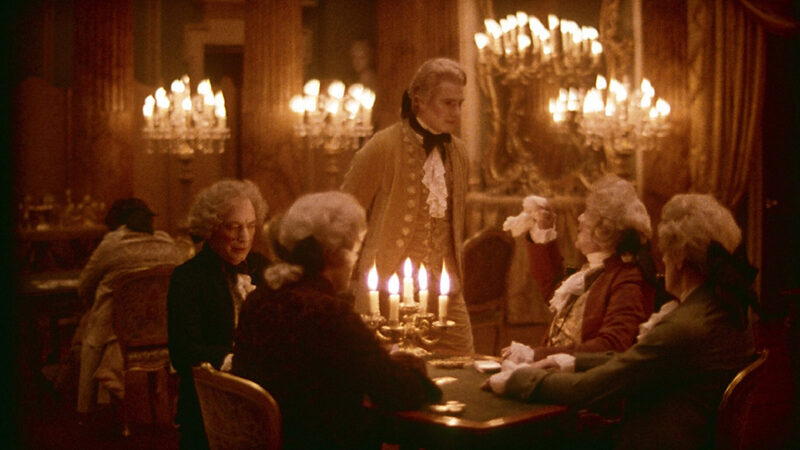
But for “Barry Lyndon,” he was doing the same thing. In other words, he was showing the world how to light scenes with candlelight only, and that this was really the way to do it. And he was kind of disappointed that people saw it as a one-off, and it didn’t inspire other filmmakers to scenes with natural candlelight.
When he saw “El Norte,” of course I was very inspired by the lighting of “Barry Lyndon,” and we approximated what Kubrick had accomplished in “Barry Lyndon” with these high super-speed lenses. We were able to exactly approximate what he had accomplished in “Barry Lyndon,” and that was very important to me with “El Norte,” because I wanted the light in “El Norte” to make a political statement, if you will—an artistic statement, a cultural statement—because the main characters, Rosa and Enrique, came from a world of candles and kerosene. They didn’t have any electric light in their village in Guatemala. They don’t encounter electric light until they come to the United States and I wanted the light in the film to reflect that.
When he saw “El Norte,” he went, “Yes! Finally we have a filmmaker who understands what I was trying to do with ‘Barry Lyndon.’ I was really trying to inspire other filmmakers to use this natural lighting technique for their films.”
We talked a lot about lighting and how lighting was used to make emotional and psychological statements. We would talk a lot about camera moves. He was very interested in history and so am I. We would talk a lot about Julius Caesar and the strategies of the Battle of Alesia during the Gallic Wars. We just went all over the place, and we became very close, and I remained friends with him for many years.
Of course, he died before the foreign language versions of “Eyes Wide Shut” were done, so he did not engage in the same kind of work with foreign versions of that film because he wasn’t around. So it was “Full Metal Jacket” that I worked with him on and became very good friends with him as a result of that. He had this whole coterie of people that he’d talk to, and he would get on the phone and talk with you for hours, and then he would suddenly get you to do stuff for him because he didn’t travel. So he would ask me to do things—check theaters out for him that his movie was going to play in, and to check out the sound.

One of the big things that he had me do: James Harris did a restoration of “Spartacus,” and Stanley asked me to go see it, and he asked me to go see it and report back to him about it. So I did, and what I told him was at the theater where it was showing, which was the one in Century City, the marquee said, “Stanley Kubrick’s ‘Spartacus,’” and he loved that because, of course, Kirk Douglas considered it to be his film, and he had a big war with Kirk Douglas. So he asked me to take a photograph of the marquee and send it to him, and so I did that.
He was always having me go out and do little errands for him and chores for him, and we actually spoke a lot about “Spartacus” and how the movie was made, and even though he disowned the movie as part of his official canon, he was very much attached to it and shared with me all kinds of interesting stories about the making of “Spartacus.” One of the most profound and important relationships of my filmmaking life was with Stanley Kubrick, and I almost consider him to be like a mentor. He spent so much time with me and took such an interest in my filmmaking and what I was trying to do, and it was wonderful to be able to pick the brain of such a brilliant man, and so his work is very influential own my films, and on “Selena.” To me, he was one of the great film masters in the history of cinema. I was very fortunate to be able to have that relationship, but he just called me out of the blue.
Probably of all his films, “Full Metal Jacket” has the most American dialect.
Oh yeah. We once spent hours figuring out how to say “c**t”—out of all the swear words, it’s different in Mexico than in Argentina. So it was an interesting experience with him because he was really, really specific. That guy wanted to know everything about everything in the film. He really shot his movies. He was really the DP of “Barry Lyndon.” Someone else got credit, he had to do that, but I think he was probably the greatest director of photography in the history of cinema. His techniques and ideas were just absolutely brilliant, and he didn’t operate on “The Shining.” He told me that he stopped operating with “The Shining” because as he got older, his eyes weren’t as sharp as they used to be, but he operated on “A Clockwork Orange” and “Barry Lyndon.” He was a real hands-on filmmaker.
